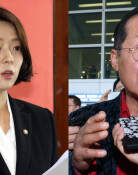The Ven. Hyecho: Korea`s first `cosmopolitan`
The Ven. Hyecho: Korea`s first `cosmopolitan`
Posted December. 10, 2010 11:24,
French scholar Paul Pelliot arrived at Dunhuang Mogao caves at a key point on the Silk Road in China on Feb. 25, 1908, a year and five months after setting up an expedition team for Central Asia, and entered Kashgar, Xinjiang Uighur.
He was focused on Dunhuang documents because he heard in Xinjiang Uighur that valuable ancient documents were discovered at the caves.
Pelliot arrived at the caves a day later and began his excavation. He met Wang Yuanlu, a Taoist spiritual guide who came to the caves in 1900 and found another stone grotto while cleaning 16 caves.
The grotto was piled high with a myriad of ancient documents. The 17th cave is called Zangjingdong since it holds ancient documents. Wang had served as administrator of the caves since then.
Pelliot looked for Wang since the French explorer could see the Dunhuang documents only through Wang. Before Pelliot, a Russian explorer came to the caves but Wang did not let him know of the stone grotto and barred British archaeologist Aurel Stein from entering it.
Wang, however, did let Pelliot, who spoke fluent Chinese, to examine the grotto.
The investigation began on March 3, 1908. For the first 10 hours, Pelliot examined ancient documents, most of which dated back to the sixth to the 10th century. The grotto was filled with not only Chinese scriptures but also antique documents written in various languages.
Pelliot considered the grotto a repository of Oriental studies and continued his research for three weeks.
One day, he discovered a manuscript slightly damaged on the front and back. Though Pelliot could not see the books title or author because of the damage, he knew what the scroll was and was thrilled.
The scroll was Wangocheonchukgukjeon (Memoir of the Pilgrimage to the Five Regions of India) written by the Ven. Hyecho, a Korean Buddhist monk from the ancient kingdom of Shilla. Pelliot knew what the scroll was because he learned about the travel journals through reading Ilchegyeongeumui written by the Ven. Hyerim before the expedition.
Pelliot made the discovery thanks to his knowledge of Oriental studies and skills in Chinese characters and language.
The Frenchman tried to strike a bargain with Wang. Pelliot urged the priest to sell all the documents in the 17th stone grotto, but Wang refused.
The persistent Pelliot kept negotiating and finally persuaded Wang to sell 5,000 major documents at a cheap price.
The Frenchman left Dunhuang on May 30 and arrived in Beijing on Oct. 5, where he sent the documents to France. Wangocheonchukgukjeon was sent to the National Library of France in Paris.
Pelliot presented the travelogue to academia in May 1909 and Japanese Buddhist scholar Junjiro Takakusu identified Hyecho as a Buddhist monk from the Shilla Dynasty in 1915.
Chung Su-il, a scholar at the Korea Institute of Civilization Exchanges who has studied the Silk Road and the travelogue, said Hyecho was Koreas first cosmopolitan.
Hyecho was born in Gyeongju, the capital of the Shilla Dynasty, in 704. At age 15, he went to China to study esoteric Buddhism in 719 and after turning 19, he set out for India for further study of Buddhism in 723.
Departing from Guangzhou, Hyecho arrived in India by ship, made a pilgrimage to eight sacred places, went to Gandhara, Persia, and Arabia and went across the Pamir Plateau. He also traveled to Kucha and Dunhuang and arrived in Changan, the capital of Chinas Tang Dynasty, in November 727.
His 20,000 kilometer-long march took four years.
Hyecho vividly recorded what he saw in his travels in the travelogue, which is full of information on five regions in ancient India. It also contains data on countries bordering western China.
The Korean travel journal was discovered with part of its front damaged. The remaining scroll is a manuscript of 227 lines and 5,893 Chinese characters, and measures 28.5 centimeters long and 42 centimeters wide with a combined length of 358 centimeters.
Some say the scroll of the manuscript discovered in the stone grotto was written by Hyecho but others say it was a manuscript of the original Wangocheonchukgukjeon.
Oh Young-seon, an art and science researcher at the National Museum of Korea in Seoul, said, We dont know which side is correct but if it was a manuscript of the original, the consensus in academia is that it was transcribed before the 10th century.
Hyechos travel to Indian kingdoms was to seek Buddhist truths. His main interest in going to East India was Buddhism but his interests expanded to politics, economy and society as well as daily life, languages, geography and climate in traveling throughout India.
He meticulously recorded everything related to human life. Though Hyecho was an esoteric Buddhist seeking the truth, he was also an explorer of civilization and thus earned distinction as Koreas first cosmopolitan.
His travels penetrated the Silk Road. In his four-year journey, Hyecho wrote of how he missed his hometown of Gyeongju. In his travelogue, he wrote a poem on how he missed his hometown of Gyerim, the ancient name of Gyeongju, proving he came from the Shilla Dynasty.
Though he missed his homeland, he died at age 76 in Changan in 780. His death abroad might have been his destiny as a cosmopolitan.
Scholar Chung said, Hyecho was a pioneer in exchanges of Eastern and Western civilizations by traveling to the center of the Asian continent for the first time in human history through land and sea and writing a travelogue. He was definitely Koreas first cosmopolitan.
kplee@donga.com




![[속보]美 “미국인은 이란 당장 떠나라” 대사관 긴급 공지](https://dimg.donga.com/c/138/175/90/1/wps/NEWS/IMAGE/2026/01/13/133147285.1.jpg)


